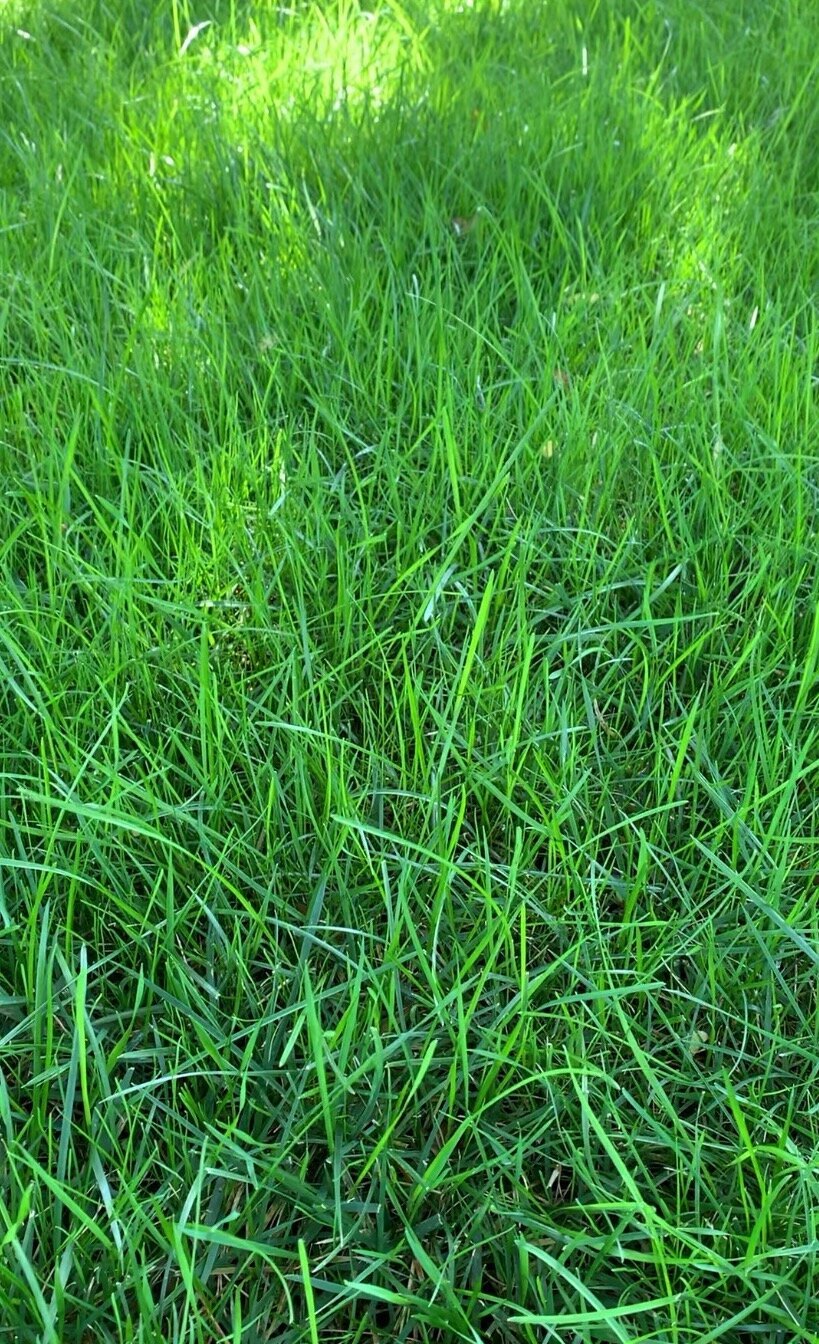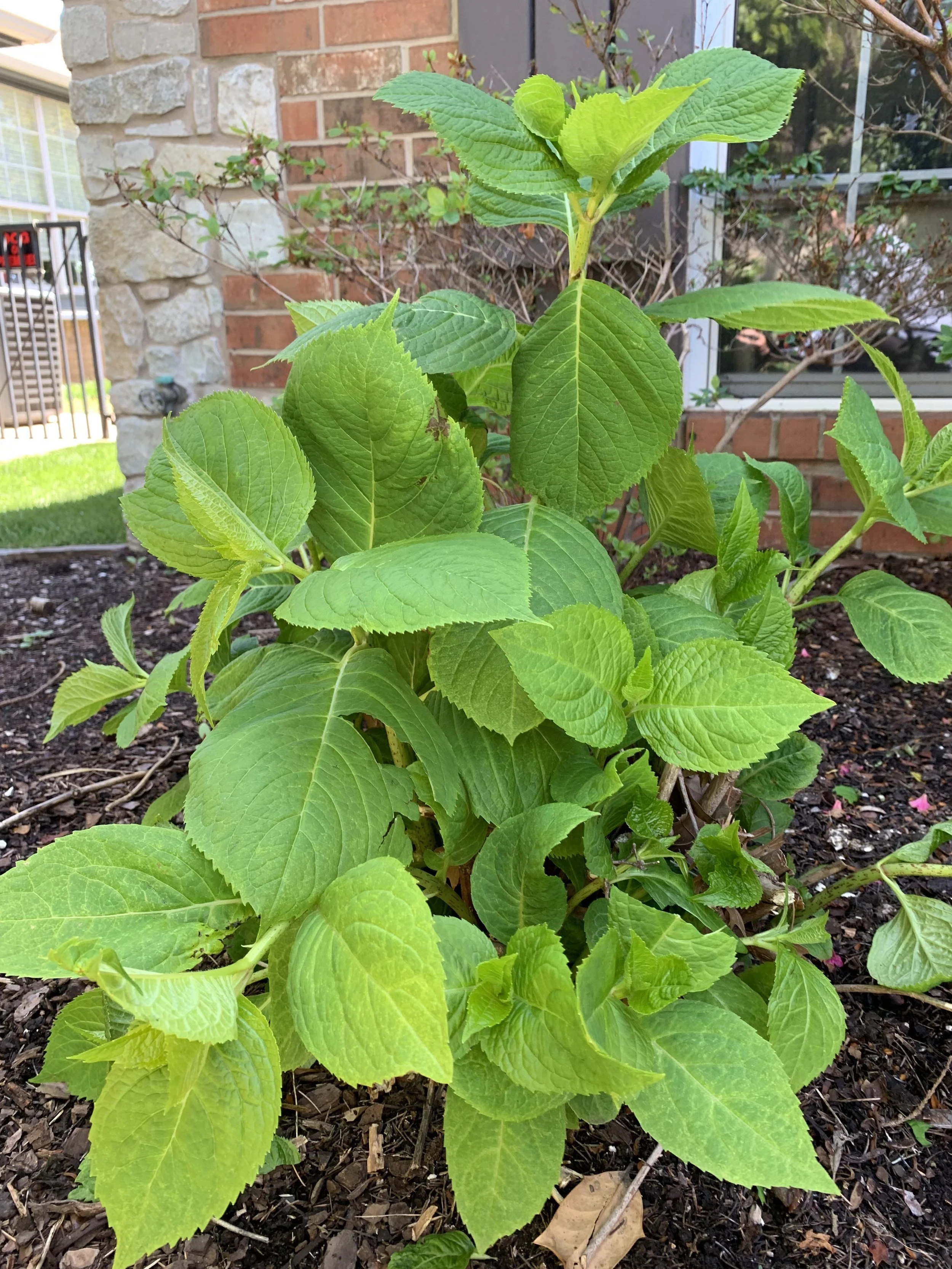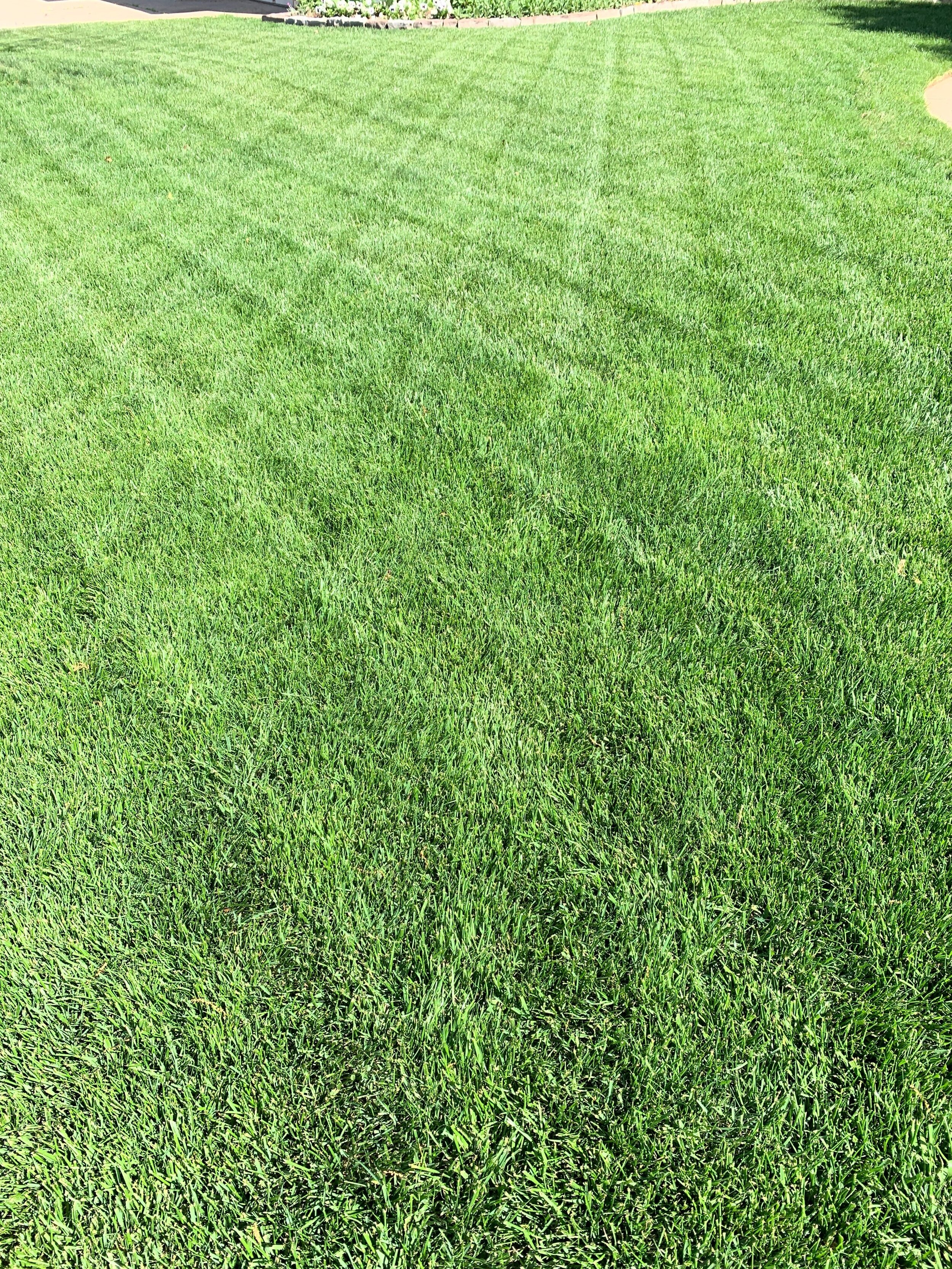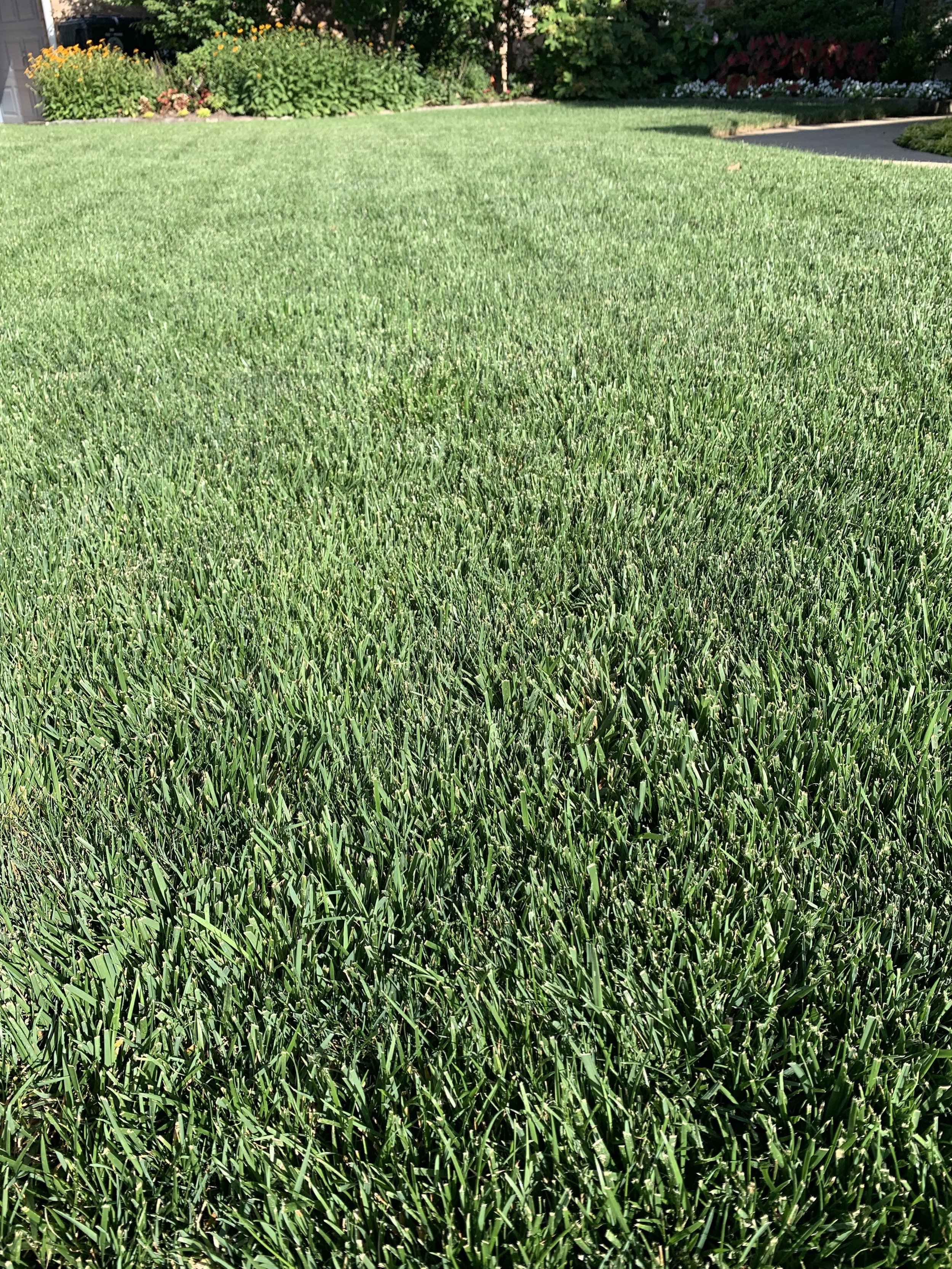
Nutsedge – Possibly The World’s Worst Weed
I have called many weeds “the world’s worst weed”, but If I am asked what some of the weeds are that give all lawn enthusiast the most difficulty, there is a 100% chance I am going to respond without hesitation: “NUTSEDGE!”
Nutsedge is fast growing, has an upright growth habit and light green in color. Because it grows twice as fast as your turf and is lighter, it ruins the best maintained lawns within a couple days of mowing.
Why is it time to brush up on your nutsedge knowledge?
Because the best growing condition for nutsedge is moist soil and after the wettest April in Oklahoma City history, we have the perfect conditions for a nutsedge battle!
Like most weeds, early action is best. Procrastination only makes winning the battle more difficult. With conditions right for nutsedge to be a bigger problem this season, we want to make sure you have the information you need to get ahead of the problem.
What does nutsedge look like?
Commonly called nutgrass because it looks like grass, but it is a sedge with triangular ‘V’ shaped leaf blade arranged in groups of three at the base.
Nutsedge grows faster, has a more upright growth habit, is lighter in color and has a thicker, stiffer leaf blade than your turf grass.
What are the best growing conditions for nutsedge?
Nutsedge thrives in moist, tight soils. It is common to find it growing in areas of poor drainage, around irrigation leaks, and in lawns that are watered too frequently.
Although nutgrass starts in overwatered lawns or areas of poor drainage, once it is established it thrives with normal irrigation, in dry lawns and even through a drought leading many to believe nutgrass has more to do with the soil structure than moisture.
Nutsedge also prefers full sun and doesn’t grow well in shade and typically isn’t a problem in shady lawn areas.
Nutsedge first emerges in May and continues to thrive until the first frost.
Why is nutsedge so difficult to control?
Nutsedge is a perennial weed. Perennial weeds are always more difficult to control. But, nutsedge is one of the toughest because it spreads by underground tubers. Four to six weeks after the first blades emerge, typically in late June to early July, nutsedge begins forming new tubers (nutlets) and rhizomes (underground stems).
The tubers grow 6-12” deep and are referred to as nuts - thus the common name of nutgrass. Nutsedge spreads by growing rhizomes which produces more nuts. Weeds that propagate through tubers and rhizomes are very difficult to control because unless you get control of the rhizome and tuber, the plant will sprout new growth within a few days. Also, tubers can remain dormant in soil for up to three seasons.
Hall | Stewart’s 7-Step Lawn Care Program includes nutsedge control. One of the benefits of subscribing to our full program is we do not charge extra for nutsedge control. Because we know the presence of nutsedge can quickly tarnish a great looking lawn, we use the most advanced nutsedge control herbicides available to the industry.
In late June to early July, uncontrolled areas of nutsedge will begin to multiply and take over areas.
What is the best way to control nutsedge?
Be proactive. With the first sign of nutsedge, take action. Nutsedge is much harder to control once it has been allowed to spread and mature.
Weed killers labeled for use on nutsedge will be either a contact killer or a systemic. A contact herbicide will kill only the leaves, and the tubers and rhizomes will remain active if you make only a single application. Systemic products will translocate through the plant to the tubers and rhizomes.
Key Point - A single applications of most herbicides labeled for nutsedge will kill the plant leaves but leave the nut unaffected.
Because it is neither a grassy nor broadleaf weed, common herbicides have little to no control. For nutsedge control you must search out products specifically labeled for nutsedge.
A few herbicides available at most garden centers labeled for nutgrass include:
Basagran – A second application must be made 7-10 days after the first application.
Image Nutsedge Killer – Requires a second application 3-4 weeks later.
Sedge Hammer Plus – Must have a surfactant mixed with the herbicide to be effective and a second application will need to be made in 6 weeks.
Ortho Nutsedge Killer and Gordon’s Trimec Nutsedge Plus – Both require follow up treatments every 4 weeks.
Please read the label and follow it. You need to know your turf type. Read the label to make sure you can use the product on your lawn.
Is pulling nutsedge a good idea?
Pulling nutsedge is only recommended when the plant is very small before nuts start to develop on the rhizomes (Best if pulling only occurs in the month of May). Once nuts start to develop, you must remove the nut when pulling the weed, which is typically 6-12” below the surface.
If you pull the weed and leave the nut behind, new plants will emerge very quickly. If pulling, the best method is to dig at least 12” deep and 12” wide to get all the tubers.
Research suggests that anytime the tuber is stressed, by either pulling the top off or by killing the top without killing the tuber itself (the result of a single application of an herbicide), the tuber multiples. Therefore, many people experience more nutsedge after they have pulled or sprayed.
Cultivating nutgrass, such as in landscape beds, is ineffective. All you are doing is redistributing the tubers and rhizomes.
One of the worse infestations of nutsedge I have experienced was in a lawn where an elderly man spent hours every week, all summer long, pulling nutsedge in his lawn. He said, “Nutsedge first showed up in my lawn a few years ago and the more I pull it the more nutsedge there is. It feels like the harder I work at pulling it the more I have!” I immediately responded, “Stop pulling it! Every time you pull it, the nut in the soil is stressed and in an effort to preserve itself, the nut multiplies.”
What else can I do to be proactive in preventing nutsedge?
Aeration is a great way to reduce the chances of nutsedge starting and spreading. Aeration reduces soil compaction and reduces the best growing conditions for nutsedge.
Our experience is lawns which are aerated annually rarely have nutsedge problems.
Water only based on need and infrequently. Overwatering, keeping your lawn too wet, promotes the best growing conditions for nutsedge. Water deep. Allow the soil surface to become dry between waterings.
Correct water leaks in your sprinkler system promptly. Nutsedge will stake a claim to any areas that become waterlogged.
Along the same line of thinking, correct poor drainage areas. Often patches of nutsedge are an indicator of poor drainage.
If you find yourself struggling with nutsedge, give Hall | Stewart a call, (405) 367-3873. The good news…. the Hall | Stewart’s 7-Step Lawn Care Program includes nutsedge control.
Nutsedge is one of the more aggressive and persistent weeds you will encounter.
Control of nutsedge can be a long process.
It is a marathon, not a sprint.
Success involves both the best cultural practices (aerating, watering, and mowing) and timely use of quality herbicides labeled for the control of nutsedge.
Lorne Hall
Hall | Stewart Lawn + Landscape
(405)367-3873
May Lawn & Landscape Tips
May, the month that your lawn, your landscape, and your life transition from spring to summer.
As much as I love May, I’m not ready to leave April just yet, how about you? But, ready or not, here comes May!
May, another wonderful month to spend outdoors enjoying your lawn and landscape.
May, a month of pleasant evenings and gradually warming days.
May, the month the green of lawns become deeper and the colors of flowers become brighter.
May, the month your attention turns toward summer trips and activities.
But, let’s not jump too quickly to summer. There are several important lawn and landscape tasks to get your lawn and landscape ready for summer.
Turf Fertilizer – Bermuda lawns need a good feeding between late April and the end of May. Bermuda will respond well to a balanced fertilizer with at least 28% to 30% nitrogen and only a small amount of phosphorus and potassium. Fescue turf needs to receive one more fertilizer application between mid-April and mid-May to get them ready for warm days of summer. Once temperatures consistently reach 90 degrees, fertilizing fescue will do more harm than good.
Weed Control - Weeds that were not prevented, both grassy and broadleaf weeds, require additional treatment to control. Now that warm season turf is out of dormancy, control of weeds can be stepped up. During May, it is best to spot spray any persistent perennial weeds, being careful to limit turf damage. Remember, the absolute best weed control is thick and healthy turf.
Nutsedge
Nutsedge will start growing in lawns this month. Because there isn’t a way to prevent nutsedge, spot treatments can be expected. If nutsedge has been a chronic problem in your lawn, annual aeration will make a difference. Nutsedge thrives in tight, wet soils and since aeration reduces compaction, we find yards that are aerated annually have less nutsedge issues.
Maynight Salvia, the perfect name for the perennial that adds bright blues and purples to the May landscape.
Anytime we make an application of weed control or fertilizer, please let us know if you have any concerns 10-14 days after our visit. If the turf isn’t greening up properly, or if weeds are not wilting, we want to know. If you are new to our program, we know it will take time to get your lawn to the healthy condition you desire. But, we expect to make progress with each visit. We know this may require additional visits and if you are on our full 7- Step Program, we will make the needed extra visits.
Oakleaf Hydrangeas will start gracing the landscape with their white blooms this month.
Tree & Shrub Care – We subscribe to an integrated pest management approach. When it comes to insects and disease, you always have to be on the lookout. Take a few minutes each week to inspect your landscape for insects and disease.
Spider Mites – During the summer months when it is hot and dry, we are on the watch for spider mites, the Two-spotted Spider Mite. But, there is also the Spruce Spider Mite that is active in the spring and fall. They can be found on spruce, pines, junipers and arborvitae. It can cause considerable damage early in the season before we are even thinking about spider mites. The first indication of the Spruce Spider Mite damage is off-green color needles. Spider mites are not controlled by normal insecticides. If you try to control them yourself, you must use a product labeled as a miticide. Insecticides will not control spider mites.
The first indication of Spruce Spider Mite damage is an off-green color on your spruce, pine, juniper or arborvitae.
Bagworms - May is the month to be watching for bagworms on needle evergreens. Bagworms are quite easy to control when they are small. But, they are very hard to see when they first start to develop. If you notice bagworms, or have a concern about your plants, please let us know.
Bagworms
Spider mites are small and almost impossible to see on the plant. If you are concerned you have spider mites, shake the plant over a white sheet of paper. If the little specks start moving they are spider mites.
Be on the lookout for bagworms this month. They are much easier to control when they are small.
Leaf spot
Leaf Spot - Leaf spots will develop if we have periods of sufficient moisture and temperatures are just right for development of the fungus. The best host for leaf spot is an already unhealthy plant in an area with poor air circulation. Control includes spraying with a fungicide at least two times in a 10–14-day period, keeping fallen leaves picked up and disposed of, and thinning the tree or shrub to improve air flow.
Aphids – A small insect that isn’t easy to spot, but the honeydew, sticky substance they excrete is easy to spot. Aphids develop on the underside of leaves, often reaching large populations before you notice them. Early detection is important, and if caught early, a high-pressure blast of water may do the trick. As the weather warms, populations increase, and insecticide treatment will be needed.
Lawn Maintenance – Both warm and cool season turf grasses need frequent mowing now. One of the most important things for good turf health is to avoid removing more than 1/3 of the grass in one mowing. Not only does it not yield you the best-looking lawn when you cut below the leaf and into the stem of the grass, it also weakens the root system. Try to maintain your bermuda on the middle setting or just below the middle setting in May. For fescue, raise the setting one notch this month and cut the lawn 2.5-3” tall. By early June, it is best to have fescue at a maximum height going into the summer.
When mowing frequently, only remove 1/3 of the grass, don’t bag the clippings. Mulch them back onto the lawn. Grass leaf blades are mostly nitrogen and water and are very beneficial to the lawn.
Dianthus is a perennial that graces the May landscape with vibrant blooms and gray and green foliage.
May Night Salvia, Dianthus and Gold Moneywort make a colorful combination in the May landscape.
Full sun planting of lantana, penta, angelonia, and sunpatiens.
Sun Coleus
Fescue color is at its best this month.
Lantana and Sun Coleus make a great summer combination in full sun, hot areas. May is the month to plant them.
Seasonal Color – May is the month to plant your summer annual color. Most landscapes look best with a splash of bright color creating a welcoming environment near the front door. Impatiens and Caladiums are great choices for full shade areas. Begonias, petunias, and geraniums do well in sun to part shade. For full sun, periwinkle, lantana, sunpatiens, angelonia, sun coleus and penta are good at handling the heat.
Penta
Caladium
Clematis vines produce an abundance of showy flowers starting this month and continuing into the summer.
Take into consideration the mature size when planting seasonal color. The temptation is to over plant.
Irrigation – The last two weeks of April delivered on the promise of “April showers.” Hopefully, you are taking advantage of the rainfall and turning your irrigation off. Assuming normal temperatures in the 80’s, your lawn and landscape requires 1” of water per week in May. The best irrigation management is one that includes keeping an eye on rainfall, soil moisture, and temperatures. Monitor conditions, turn your system off if when are in a rainy period. Poor water management is setting the irrigation system at the beginning of the season and letting it run regardless of the conditions.
If you have subscribed to our Irrigation Management program with the Rainbird Wi-Fi Link, we will make watering decisions based on soil temperatures, soil moisture, temperatures, and recent rainfall and adjust your controller via the Rainbird app.
Moisture Retention – Tired of high water bills during the summer months? Hall | Stewart has a new program just for you, Moisture Retention. The program includes two applications (April-May & July-August) of a unique root zone moisture management product that reduces the overall watering requirements of your lawn and landscape resulting in less frequent watering. For more details, give us a call or spend a few minutes visiting our post from April 5th.
Peonies have started to add stunning blooms to the landscape.
Peonies not only add great color to your late spring landscape, they also make excellent cut flowers.
Endless Summer Hydrangeas will produce their first blooms this month.
Oakleaf Hydrangeas are adding flower buds now that will grace the landscape later this month with large white blooms.
The same plantings in July
Wisteria
Periwinkle
Remove the brown stems on your hydrangeas left from the winter back to the first bud this mont.
Azalea Care – Azaleas were stunning again this spring. Azaleas require a little more care, but they are worth it. Fertilize azaleas this month. After blooms fade and before the end of June prune azaleas if needed. Pruning after mid-summer will result in less blooms next year. Azaleas look best when minimally pruned and allowed to retain their natural shape. Prune by removing longer shoots by reaching down and making cuts where they come off a larger branch. This will improve air moment and promote healthy growth. Avoid shearing azaleas. Add a fresh layer of mulch to keep the soil cooler and retain moisture during the warm summer months to come. The best mulch for azaleas is pecan hulls or pine bark.
Oakleaf Hydrangeas add graceful white blooms to the landscape in May.
Hydrangea Pruning – If you haven’t already, now is the time to prune the brown stems left from the winter back to the first bud. In most cases this is the only pruning recommended for hydrangeas. During the summer, if you want to you can snip off spent blooms, but it is not required. Otherwise, keep the pruners and shears away from your hydrangeas. And…never prune in the fall. Need more information on hydrangea care, visit our recent post on hydrangeas.
Gold Mound Spirea not only add interest to the landscape with their foliage, they also deliver an additional touch of color with red-violet blooms this month.
If you have any questions, please drop us an email or give us a call at (405)367-3873.
Our mission is to help you have your best lawn and landscape…one that improves the appearance, enjoyment and value of your surroundings.
Lorne Hall
Hall | Stewart Lawn + Landscape
(405)367-3873
Aeration… the "Then Some” of Lawn Care
A good lawn is the result of several key activities:
1. Correctly timed pre-emergent applications to prevent weeds before they germinate.
2. Applying the right amount of fertilizer to ensure you have a thick and healthy turf.
3. Regularly scheduled mowing that only removes the top 1/3 of the leaf blade each time.
4. Infrequent, deep watering based on seasonal need.
But, there is a 5th activity that too often is overlooked.
George Toma, the greatest groundskeeper in the history of sports, has a saying:
“Do the job and then some. It is the ‘then some’ that
distinguishes the mediocre from the great.”
George Toma played a part in preparing the playing field for every Super Bowl until he retired after Super Bowl LVII at the age of 95. Toma is known as “The Sodfather!”
George Toma, presenting the keynote address at a turf conference several years ago, started his talk by announcing he was going to discuss the three most important things to have a great turf.
His 1st point was Aeration.
His 2nd point was Aeration.
And, you guessed it, his 3rd point was Aeration.
What are the benefits of aeration?
Soil compaction is reduced.
Air movement into the soil is improved.
Fertilizer can quickly reach the root zone.
Water runoff and puddling is reduced.
Roots grow stronger and deeper.
Thatch is reduced.
Reduction in weeds that thrive in compacted soils.
For George Toma, the “then some” that distinguishes the mediocre lawn from a great lawn is aeration.
Aerification is a must!
If your goal is to have your best lawn possible, aeration is a required step in your lawn care program.
What is aeration?
Aeration is the process of mechanically removing 2”-3” cores of soil, 4”-6” apart, from your lawn.
Compact soils prevent grass from establishing a healthy root system and prevent air, water, and nutrients from reaching the root zone. Walking, playing, and mowing (in other words everything you do on your lawn) increases soil compaction.
As Oklahomans, we know about tight clay, compacted soils. Our clay soils make growing a great lawn a challenge.
Too often we accept soil compaction as just the way it is and settle for the status quo of an average lawn.
Stop accepting the norm!
You don’t have to struggle with the results of growing a lawn in tight, compacted soil.
Golf courses typically aerate their turf at least two times per season. No wonder the fairways look so much better than most home lawns.
Lawns with compacted soil also are more susceptible to weed development. Most weeds thrive in tight compacted soil.
Nutsedge, one of the most difficult to control summer weeds, thrives in tight soils. Our experience has shown that annually aerated lawns have far less problems with nutsedge.
Why do golf course fairways always look so good? Turf managers know the importance of aeration. The secret to a great lawn is a great root system. Annual aeration is the ticket to a great root system.
Should the cores be removed or left on the lawn?
Leave the cores on the lawn. As they breakdown and dissolve, they will refill the holes with loose soil resulting in improved soil structure. The cores will break up and settle back into the lawn within a few weeks.
When should you aerate?
Warm season lawns (Bermuda and zoysia) should be aerated any time after spring green-up and before the end of July.
Cool season lawns (fescue) should be aerated in the fall, September through October. Aeration in conjunction with overseeding will not only improve the soil structure, but it will also improve seed soil contact resulting in better seed germination.
Now through the first half of the summer growing season is the best time to aerated lawn Bermuda, a warm season turf.
Nothing will take your lawn from good to great more than an annual aeration!
One more Toma saying… “The most important part of grass is the soil and the root system.”
Aeration is the best way to improve the soil structure and develop a stronger root system.
Aeration, the most overlooked lawn practice, will give you a healthier, more vigorous, less weedy lawn.
To achieve your best lawn, annual aeration is a must.
Lorne Hall
Hall | Stewart Lawn + Landscape
(405)367-3873


























































